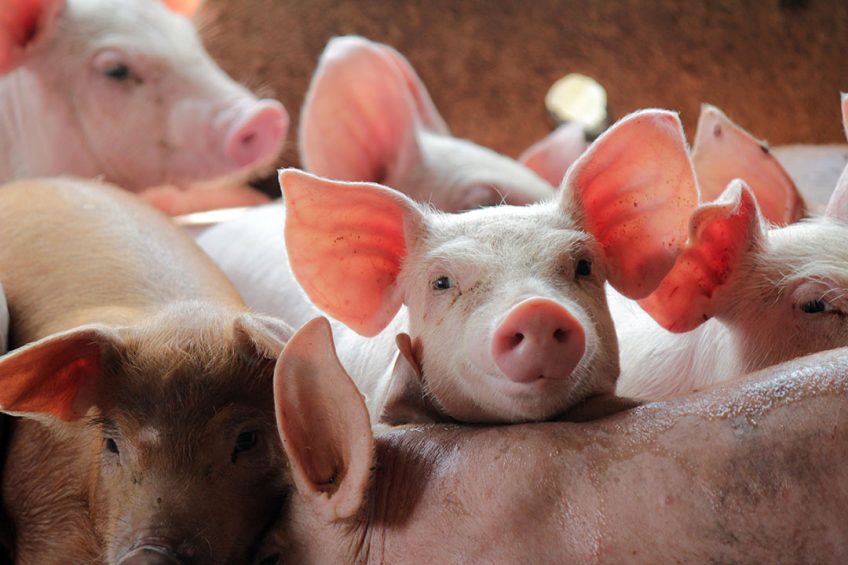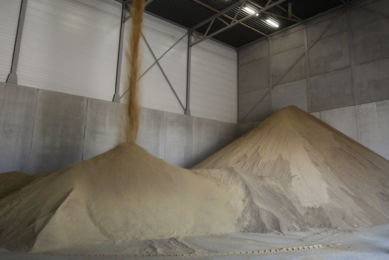The copper recycling pathway through bile

Bile is not often a topic in Pig Progress but the fluid may well have a more important function for successful pig farming than was thought. Experiences show that copper, which is absorbed, stored in the liver, and excreted into the bile, exerts an antimicrobial mode of action resulting in improved growth rates and feed efficiency.
Copper is often suggested to have a growth-promoting effect in pigs. That has been attributed to its antibacterial effect beside others like a systemic effect which indirectly stimulates feed intake and growth. Recent studies have shown that there is a link between the growth promoting potential and the bioavailability of dietary copper. To understand that possible mechanism, Figure 1 is illustrating the metabolic and hepatic copper flow. Dietary copper from CuSO4 is typically poorly absorbed in the digestive tract of animals. After the uptake in the intestinal tract, the liver plays a key role in the complex mechanism of absorption, storing and excreting the copper.
Copper stored in the liver can be excreted when needed to the bloodstream. A smaller amount is delivered to the tissue for metabolic processes (number 2 in the figure). The major content of the storage pool is released into the bile (number 1 in the figure) to be excreted in the intestine. The complex bile juice produced by the liver is stored and concentrated in the gallbladder. Beside different functions of the bile juice, conjugated bile salts and other copper-related compounds are exhibiting an anti-microbial effect.
As there is a correlation between the copper content in the liver and the amount released in the bile, the antibacterial effect of the bile content can be related to the copper levels in the liver. To exert an antibacterial function and as a result a growth stimulating effect, copper seems first to be absorbed, delivered to the blood stream and liver and then released in the bile to be excreted into the intestine. Maximising copper absorption can therefore be a way to increase its effectiveness. As a result, a higher bioavailable chelated copper delivers a promising nutritional tool to improve overall gut health and performance in piglets.
Figure 1 – Uptake, excretion and metabolic pathways of copper.

Higher bioavailability
A variety of studies are supporting the importance and the model of the copper recycling pathway. In a trial with weaned piglets, copper tissue deposition was analysed by using different sources of copper. Equivalent amount of copper, either in the form of CuSO4 or HMTBa-chelated copper (Figure 3) was fed to 160 piglets (eight pens, ten piglets per pen). Piglets receiving the copper chelate had significantly higher liver copper levels reaching 30.5 mg/kg compared to 18.4 mg/kg for the piglets fed the CuSO4 diet. As the copper levels in the feed were identical, it can be concluded that the HMTBa-chelated copper was better absorbed than the inorganic source of the trace mineral.
Higher copper levels in the liver result in increased copper quantities secreted from the bile and thus delivering a potential higher anti-bacterial effect. This concept linked to a bacterial inhibition of biliary copper was tested in a trial, looking at the anti-bacterial effect of the bile juice in piglets fed with different sources and quantities of copper. The four treatments were based on a control group (no added copper), a diet with HMTBa-chelated copper (75 ppm Cu) and two sulphate groups (75 ppm and 250 ppm of copper). Each dietary group was fed to 30 piglets with six replicates of five piglets/pen.
Figure 2 – Antimicrobial compounds in the bile juice.

Bile juice was collected at 28 days post weaning and microbial inhibition was tested on different bacterial communities isolated from the intestinal tract of the control pigs. Microbial inhibition of the bile juice was similar when pigs received a diet containing 250 ppm from sulphates and 75 ppm from HMTBa-chelated copper and showed both higher anti-bacterial effects compared to the control diet or the addition of 75 ppm CuSO4.
This observation indicates that copper which is absorbed in the gut lumen, stored in the liver, secreted to the bile and recycled back to the gut performs an antimicrobial effect. These findings are supported by earlier studies, showing that bypassing the gut lumen by an intravenous injection of copper histidinate, resulted in similar growth promoting effects than a dietary copper supplementation.
Figure 3 – Effect of HMTBa-chelated copper supplementation compared to CuSO4 on tissue copper deposition.

Practical experiences
The importance of higher copper bioavailability on improved health and performance under commercial conditions was tested together with a leading European swine producer. The HMTBa-chelated copper source was used on a farm with 700 weaned piglets per group by comparing identical copper levels in two diets. In the control diet copper sulphate was added at 150 ppm copper. In the second diet copper sulphate was replaced by HMTBa-chelated copper at identical levels (150 ppm) and the diets were adjusted for methionine, also see Table 1.
After 57 days, animals in the HMTBa-chelated copper group were 1.7 kg heavier and the feed conversion reduced by 0.11 points (p<0.05). 1.64 kg of feed was required in the control group compared to only 1.53 kg for piglets in the hmtba-chelated group to achieve 1 kg of weight gain. taking into consideration a total of 25 kg weight gain, about 110 g less feed is needed per day which is equivalent to 2.75 kg of feed per piglet. a unit with 300 sows and 30 weaned piglets per sow and year would need about 25 tonnes less feed due to the application of hmtba-chelated copper. together with the reduced mortality and less medication costs (€ 0.10 less in the hmtba-chelated group), the replacement of cuso>4 with a highly available copper source significantly improved the economic benefit for the farmer.
Such commercial results fit well in a recent published multi-trial analysis comparing CuSO4 against HMTBa-chelated copper in diets for piglets. Based on the data it was concluded that, at identical levels of copper, HMTBa-chelated copper outperforms CuSO4 resulting in higher daily gain and improved feed conversion rate. Average daily gain was significantly improved by 3% and feed conversion rate by 2.6% when piglets received the diet containing the chelated copper compared to a diet with CuSO4. In addition, the incidence of diarrhoea was reduced by 23% in weaners fed HMTBa-chelated copper.
| Feeding organic copper Post-weaning diarrhoea has become very topical recently in the EU with stricter rules with regard to the usage of zinc or copper in weaner rations. In terms of copper, permitted levels in complete feed are down to 150 mg/kg (up to four weeks post-weaning) and to 100 mg/kg at five to eight weeks post-weaning. One way to overcome that is the usage of an organic copper source, chelated with methionine hydroxy analogue (HMTBa-chelated copper, Mintrex Cu, Novus International, US). This is known to be more efficient resulting in significant higher growth promoting effects and less diarrhoea. Compared to the inorganic copper sulphate (CuSO4), the trace mineral in HMTBa-chelated copper is surrounded by a ring structure with two molecules of the hydroxy analogue of methionine (2-hydroxy-4 methylthiobutanoic acid, HMTBa). This ring structure protects the copper from potential interactions in the feed and digestive tract ensuring highest bioavailability of the trace element. In addition, the ligand is efficiently used by the animal and delivers an important methionine source. |











